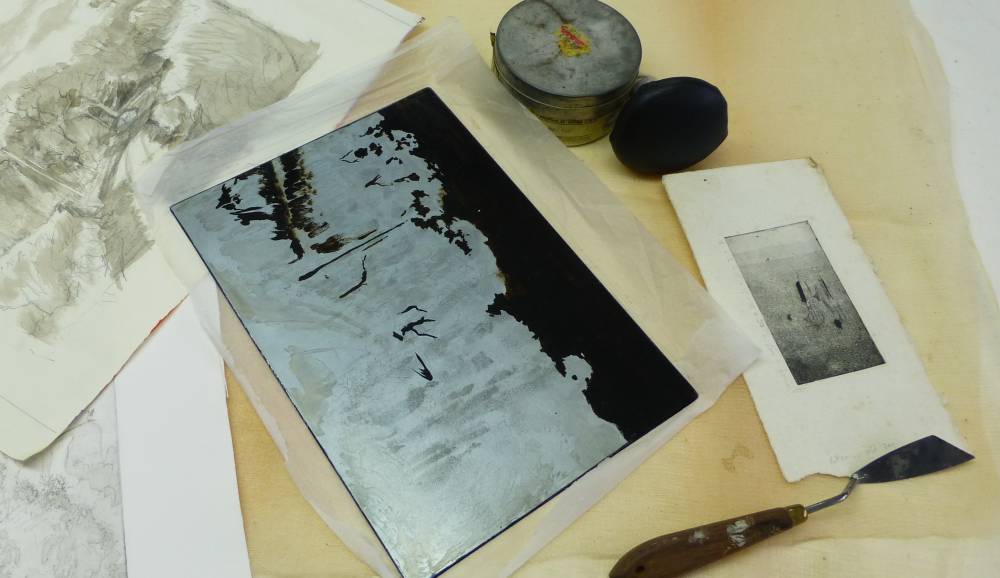There are various methods the artist can use to get the desired effect on the finished print.
It all starts with the plate and how the acid is kept away from the parts which need to be lighter. Each of these methods result in very different effects. Mixed methods can be used on a single plate in stages, and can involve some engraving or drypoint.
It isn’t at all necessary to use more than one technique to produce a beautiful etching, it’s simply that choices are available to the artist and artists have preferences or love to experiment.
The artist can add to or take away the protective coating on the plate.
Aquatint is an ‘adding’ resistance method and you can read about that here.
We’ll start with taking away
A metal plate of copper or zinc must be prepared by applying a coat of wax or resin to protect parts not to be ‘bitten’. This is known as a ‘ground’ and may be hard or soft. The ground is applied all over the plate and then taken away to expose the metal to the acid. These are the parts that will hold the ink.
A hard ground is for making lines with a metal tool (etching needle) and makes sharper lines. The artist draws directly on the plate to scratch the ground away revealing the bare metal and puts it into the acid. This can be done progressively, so that the lines drawn are etched by degrees.
Soft ground is used when the desired effect is similar to that of a pencil mark. It is covered lightly with some thin tissue and drawing onto this will stick the drawn area to the wax allowing it to be pulled away leaving metal exposed to the acid. It can have textured materials pressed into it and pulled off taking the wax away and exposing the metal.
The intensity of the ink is governed by the depth of ‘bite’.
Tones
Aha! Yes, of course – there are many ways of making dark and light areas in an etching and I can’t describe them all here – I don’t know them all anyway! But essentially…
Tonal range is accomplished both by adding more lines, making areas of close lines and by adding lines before dipping in the acid again. With each dipping the earlier lines will become deeper and wider and therefore produce a darker area than those lines added later. The timing is important too, the longer the immersion the deeper the bite.
This can be done as many times as needed, but the acid must be washed off each time without damaging the work in progress.
Nail-biting process!
Artists use close parallel lines, ‘hatching’ (criss-cross lines), squiggles, dots, and other marks to get tones.
In soft ground the pressure applied in the initial drawing affects the amount of wax removed. Textured materials such as cloth and sandpaper pressed into the ground make tonal areas. The wax comes away unevenly, so giving softer edges.
And there are other ways of preparing the metal…
You can read about Aquatint here.
Note: This is not a lesson on how to make etchings – it is intented for those who enjoy etchings to give them a deeper understanding of the way they are made, thus enhancing their appreciation of the medium.

